Ulysse Nardin Ship's Chronometer
This is a Ship's Chronometer made by Ulysse Nardin. Had not been working.
A Ship's Chronometer is a specialised and highly accurate time piece (in terms of the rate) that was used to locate a ship's longitude at sea. In later times, they were also an important tool in land surveys.
John Harrison is credited with building the first timepiece that satisfied all the requirements of the Longitude Prize. Further improvements are credited to Pierre LeRoy, Thomas Earnshaw, John Arnold.
This is the chronometer. It is an Ulysse Nardin. You can see the chronometer in the gimbals, with the lock in place. In the top right corner of the box is the ratchet or "tipsy" key characteristic of a chronometer. This prevents winding in the wrong direction which can potentially damage the chronometer. I've put a small video below to demonstrate the working of the key. The up - down indiactor is seen just below the 12 marker. This shows the number of hours that the chronometer will run in the present state of winding.
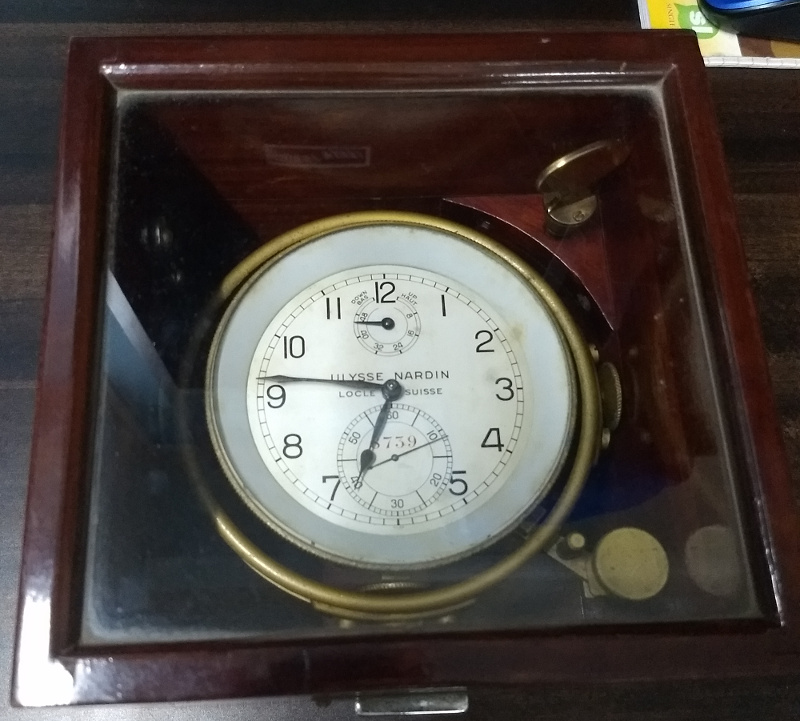
These are photos of the movement (held in a custom made movement holder) in various stages of disassembly.
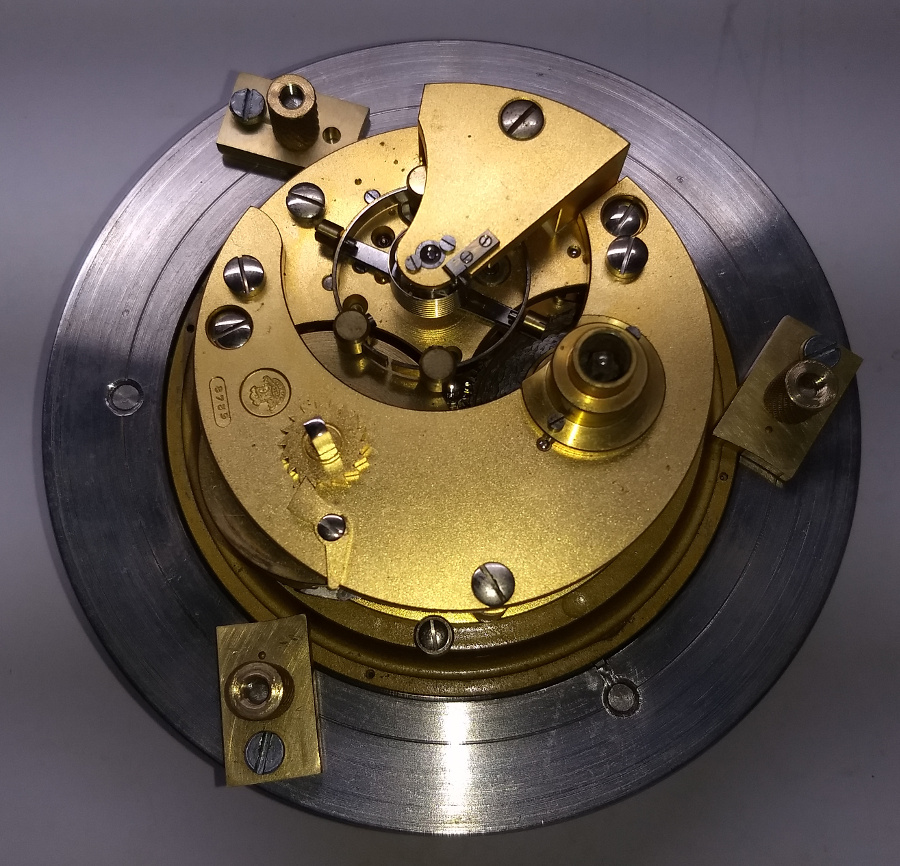
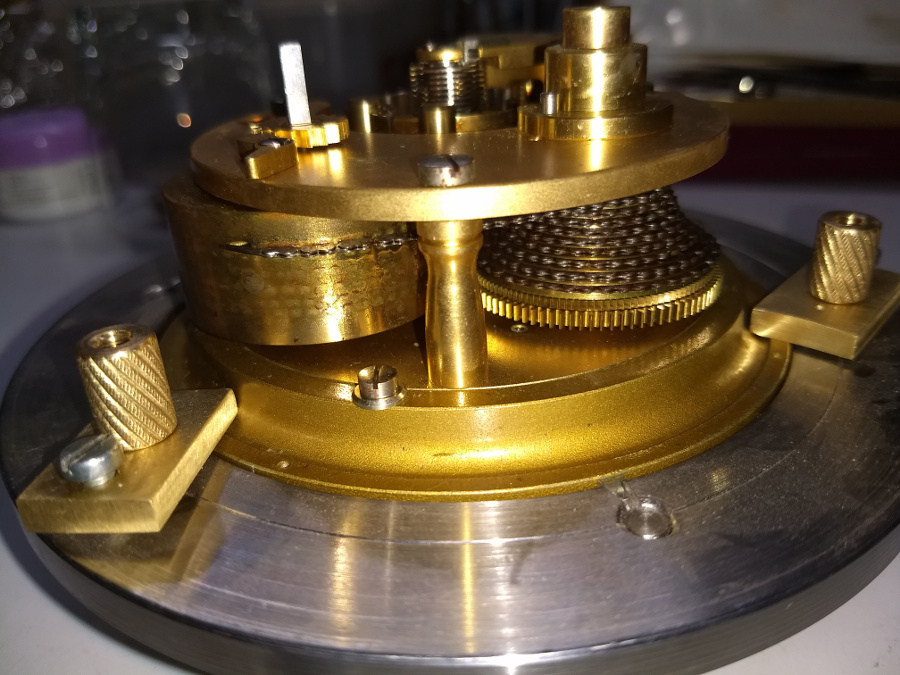
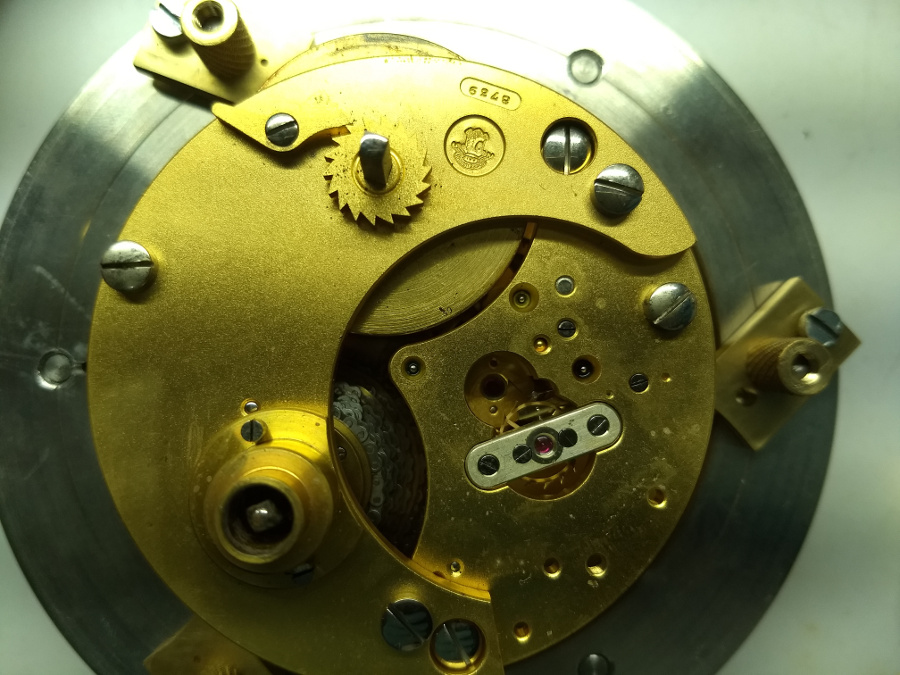
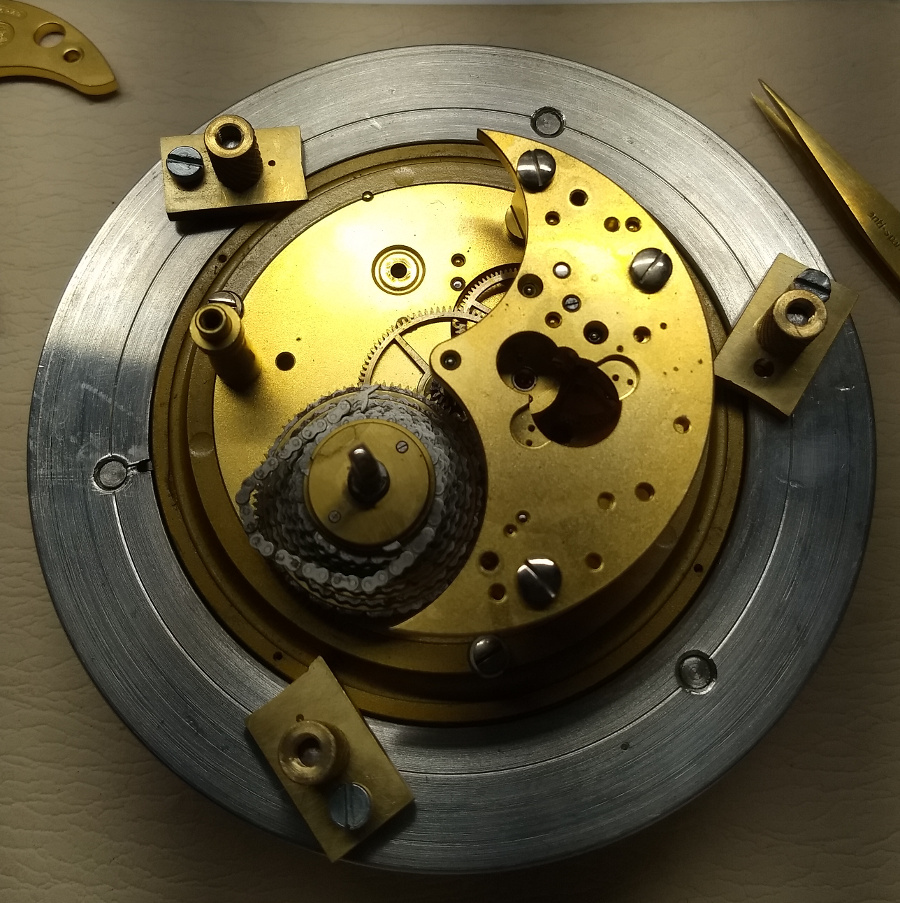
Here is a view of the dial side.
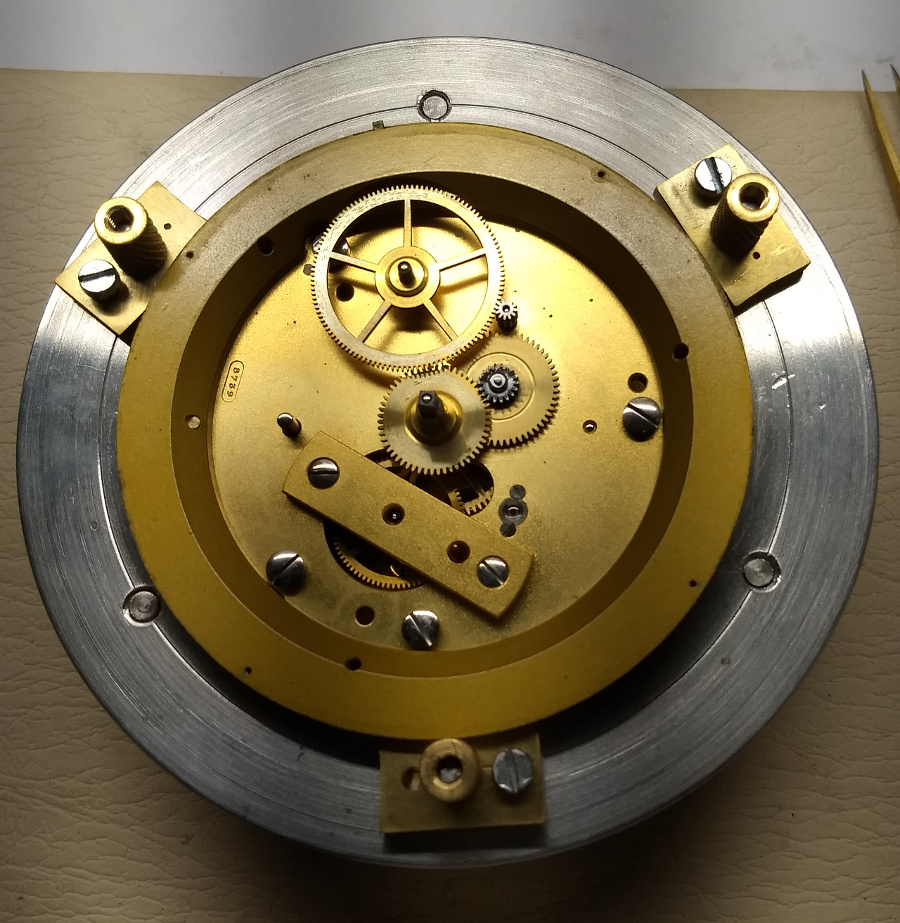
The fusee with the chain.
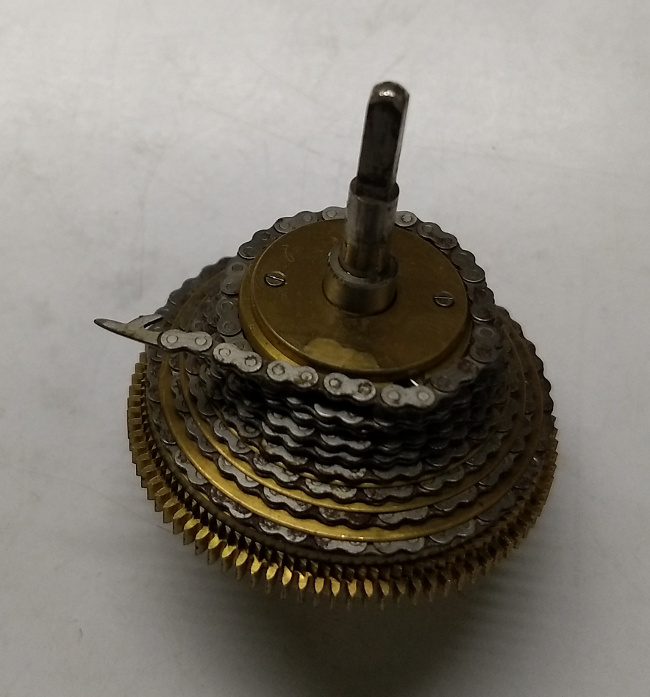
The fusee disassembled for full cleaing, showing the "stop bar" wich prevents overwinding which would stress the chain.
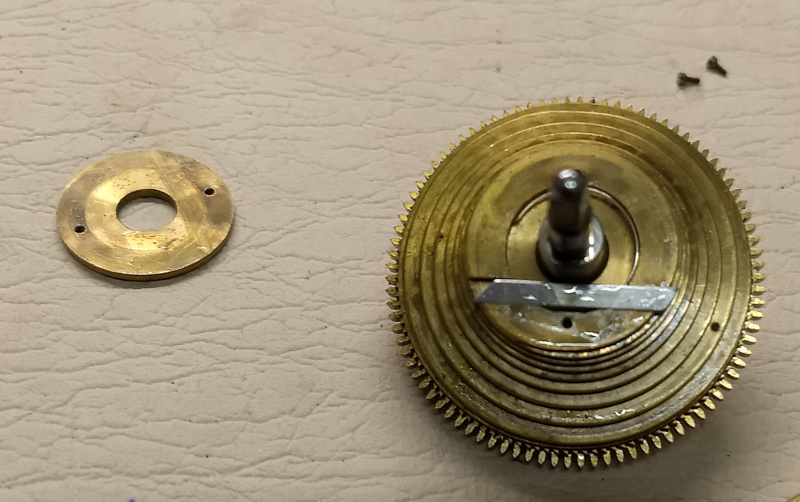
And here it is covered under a glass dome to keep the dust away when I'm not working on it.
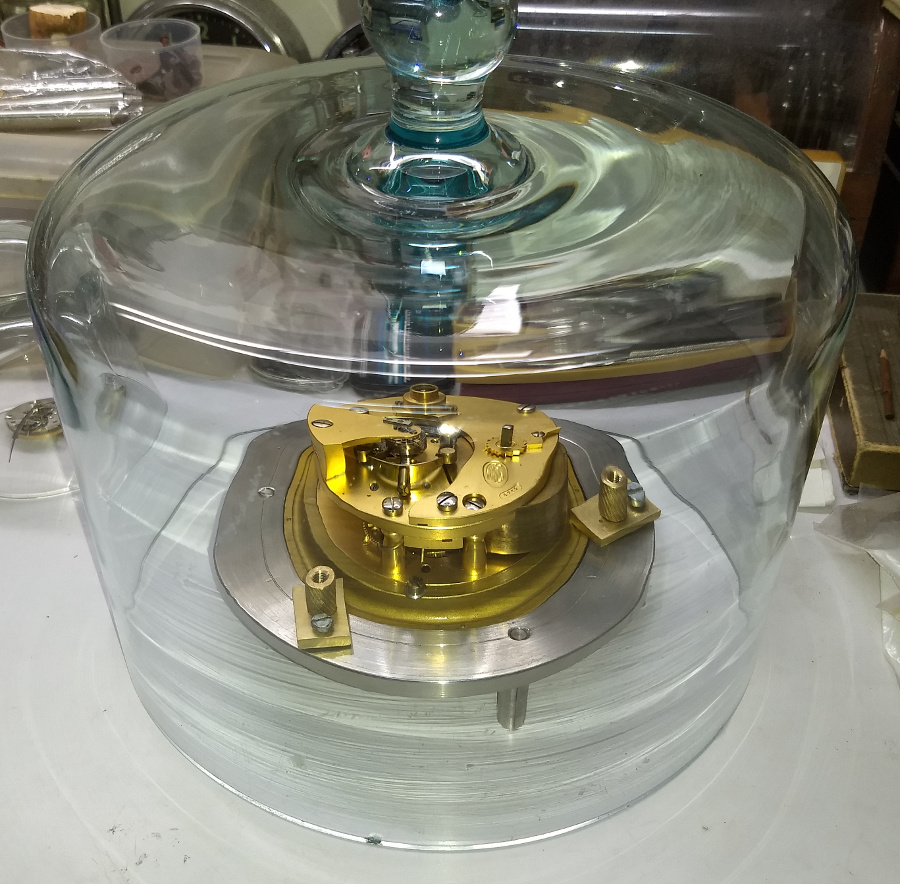
This chronometer came in a non working condition. On disassembly, this is what was fond.
There is a thin shim of paper and what looks like aluminium foil under one corner of the balance cock.
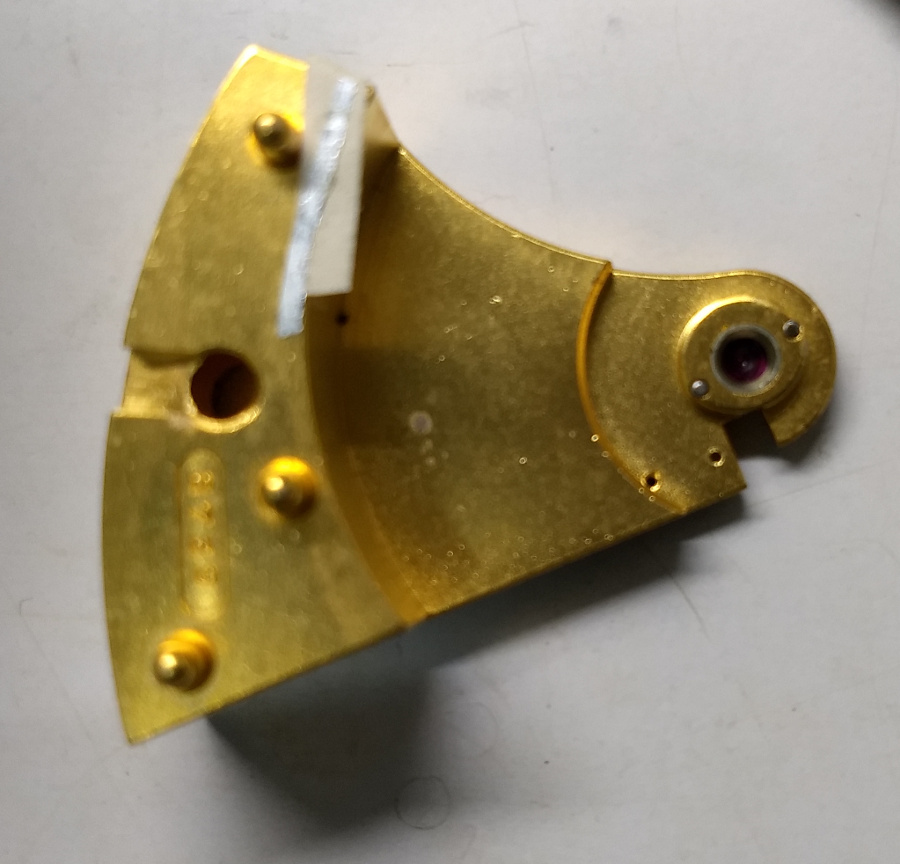
And here comes the piece de resistance -- a bent balance pivot.
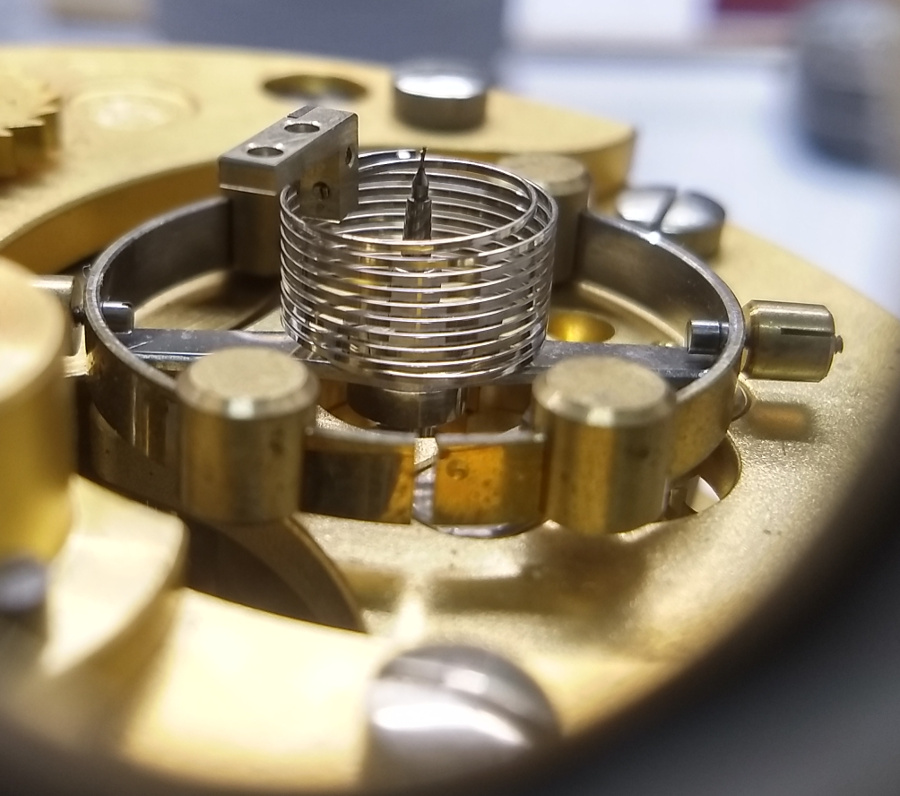
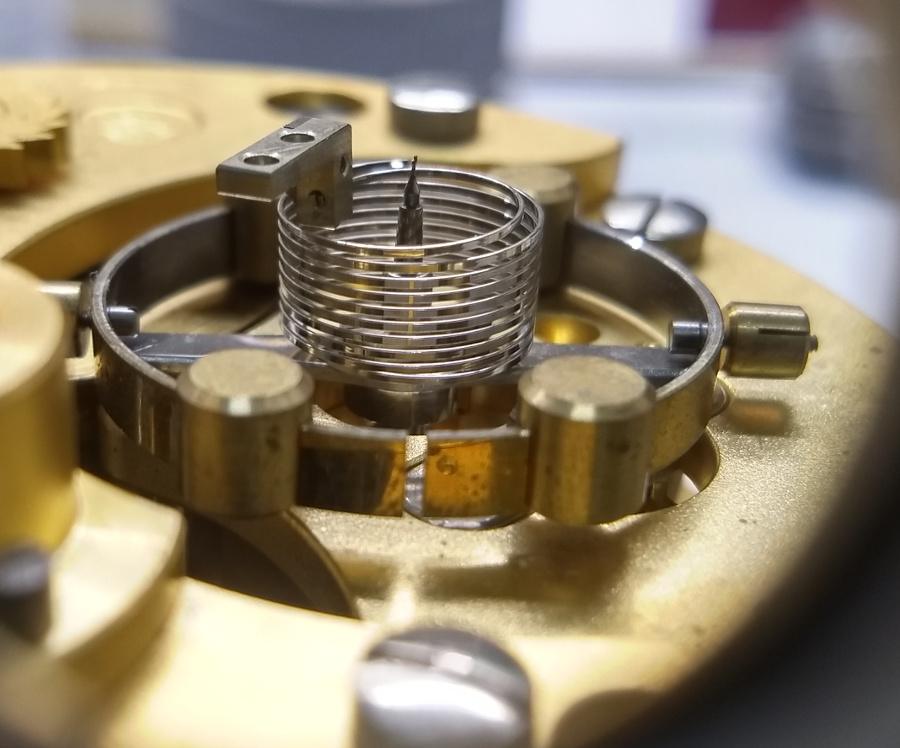
So what could have been the problem ? Probably the previous repair person changed the balance staff but could not get one of the correct length and also probably lacked the equipment or expertise to shorten it, so he shimmed the balance cock, but unfortunately not enough, so when he tightened down the balance cock screw, he ended up also bending the balance pivot. The necessary repairs were done to get the chronometer back to a running condition.
Below are two photos of the detent -- which lies at the heart of a chronometer's escapement. To give you an idea of the size, the length is around 25mm or 1 inch.
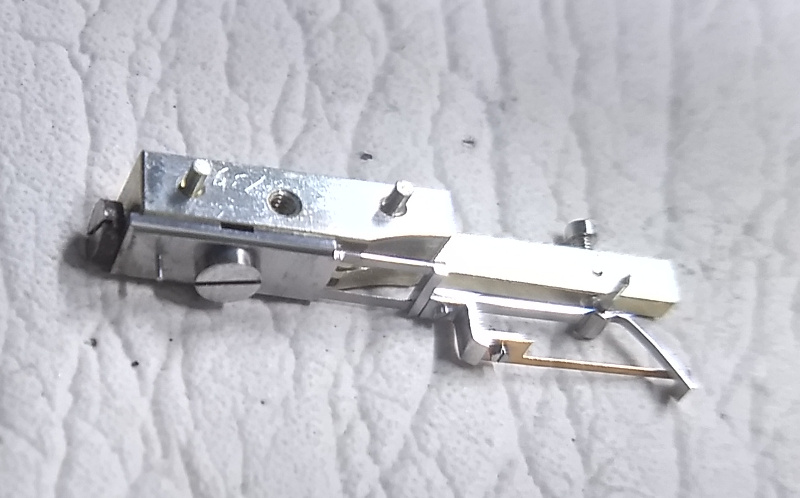
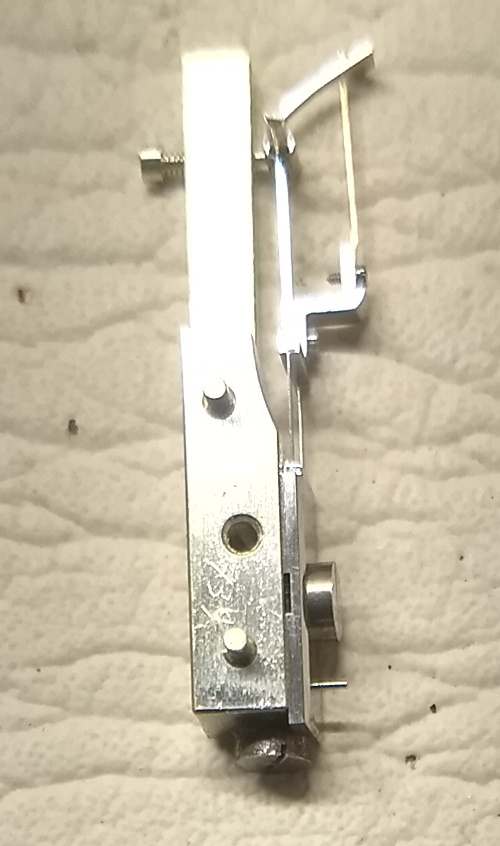
Below are two videos showing it working before it was put back in the bowl and the case.
Here's a short video demonstrating the working of a "tipsy" key.
